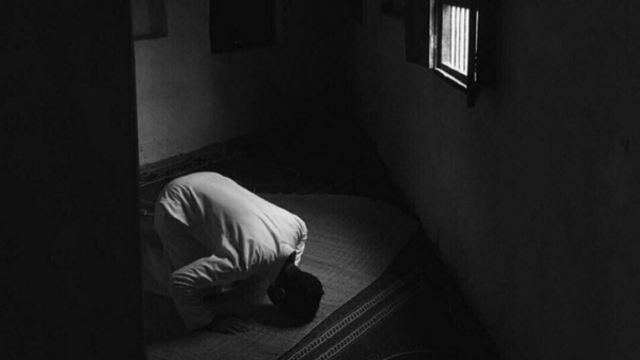While commuting to work on public transport, Imane is confronted by an individual who hurls racial insults and threats at her. She remains shocked but is unsure how to react to this situation. How can she prove her victim status?
To have one’s victim status legally recognized, it is necessary to prove the existence of the harm suffered. Compensation for the damage will only be possible if it meets certain characteristics.
1. The Characteristics of the Damage
Damage is compensable if it presents the following four characteristics. It must be:
- Certain: the damage must not be hypothetical. However, the damage can be future but not speculative, e.g.: an accident that will have certain consequences on the victim’s health; the damage can even consist of a ‘loss of chance’, example: a student is prevented from taking an exam due to an accident. To compensate for this damage, judges will consider the probability of success in the exam.
The requirement for certainty of damage is set aside in certain cases:
Examples: in cases of infringement of the right to privacy, the mere violation of the right to privacy is sufficient to engage the responsibility of the perpetrator and to open the right to compensation (Court of Cassation 1st civ., Nov. 5, 1996). It is therefore not necessary to prove damage to obtain compensation based on Article 9 of the Civil Code.
Also, in labor law, the mere observation of exceeding the maximum working hours opens the right to compensation (Art. L. 3121-20 of the Labor Code), or the unjustified loss of employment by the employee causes compensable damage.
- Personal: only the victim of the damage can claim compensation, whether it is the direct victim or the victim by ricochet.
- Direct: the damage must be clearly the consequence of the event generating liability. In case of ‘cascade’ damages, it is up to the judge to determine where the direct damage ends;
- Infringe on a legitimate interest: the victim must be in a situation compliant with the law to claim compensation. Ex.: a person who performs undeclared work cannot claim their salary if it has not been paid;
2. The Evidence
The person must also gather documents that attest to the offense of which they are a victim and the damage suffered. The evidence will differ depending on the type of damage suffered: physical (injuries, disability, etc.), material (degradation, destruction, etc.), or moral (damage to honor, for example).
Evidence may consist of:
- A filed complaint or police report;
- Certificates or attestations issued by a doctor. This can be from the treating physician or the emergency department of a hospital. After filing a complaint, you may be directed to a forensic medical emergency service (UMJ). A medical examination may also be ordered by the public prosecutor or the investigating judge. The medical certificate must mention your identity, your testimony, a precise description of the injuries, lesions, or traumas suffered and their compatibility with your statements. The certificate also mentions the physical and psychological consequences of the observed injuries and the number of days of total incapacity for work;
- Photographs;
- Testimonies;
- Any document attesting to material damage and expenses incurred, e.g., repair estimate or invoice;
- Employment contract in case of loss of salary Repair invoices;
- Screenshots, e.g.: harassment messages. The date and time must be visible. You can also save them on another medium;
- Recording under certain conditions;
- The URLs of each content.
For all online offenses, preserve the evidence before reporting the content and before it is removed, otherwise you will no longer be able to initiate proceedings to assert your rights.
You can even have the contentious content verified by a judicial commissioner.
If you have made reports to platforms, make backups of your actions (e.g., CNIL, PHAROS).
The Burden of Proof
The burden of proof will not be the same depending on whether you are before civil or criminal courts.
In the inquisitorial system, applied in criminal and administrative matters, it is the judge’s responsibility to gather evidence.
In the adversarial system, which governs civil trials, the parties must provide evidence for their claims. Article 9 of the Code of Civil Procedure states that ‘it is incumbent upon each party to prove, in accordance with the law, the facts necessary for the success of their claim’.
Article 1353 of the Civil Code organizes the order of production of evidence chronologically:
Firstly, ‘the person claiming the performance of an obligation must prove it’. It is therefore up to the plaintiff in the case to bear the burden of establishing the reality of the alleged facts. Thus, in tort law, the victim of damage must, in order to obtain compensation on the basis of Article 1240 of the Civil Code, establish the fault of the defendant, the damage suffered and finally, the causal link between the fault and the damage.
Once the plaintiff has proven their allegation, it is the defendant in the case who comes to challenge the claims of their adversary.
Once the damage suffered is proven, the victim can obtain compensation.
APPLICABLE REFERENCES:
Articles 1240 to 1244 of the Civil Code (liability in case of fault); Articles 1245 to 1245-17 of the Civil Code (liability for defective products); Decree No. 2005-113 of February 11, 2005 relating to liability for defective products;
Art. 1146 and 1147 of the Civil Code (contractual liability); Art. 1382 and 1383 of the Civil Code (torts-quasi-torts); Article 1240 of the Civil Code; Article 1353 of the Civil Code; Articles 2 and 3 of the Code of Criminal Procedure; Art. L452-1 of the Social Security Code (work accidents); Law No. 85-677 of July 5, 1985 aiming to improve the situation of victims of traffic accidents and to accelerate compensation procedures.




